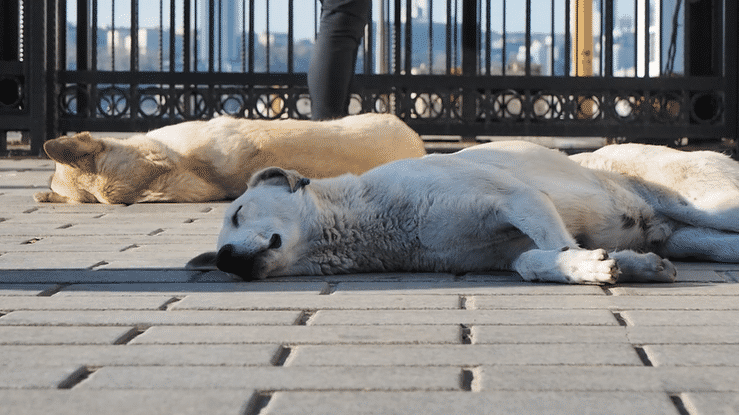
Sep 19, 2024 Turkey’s New Law on Homeless Dogs: Controversial Measures and Capacity Challenges
Challenge

On July 30, 2024, the Turkish parliament voted 275 to 224 to pass a law directing municipalities to remove homeless dogs from the streets and place them in shelters for adoption. The government estimates there are around 4 million homeless dogs in Turkey. At the same time, according to a report in Time magazine, the country has 322 animal shelters with a capacity to house only around 105,000 dogs. There is a significant gap between the provisions of the government’s law and the available infrastructure.
The 2024 law was passed after weeks of protests against a proposal dubbed the “Massacre” law by its opponents because one of the early drafts stated that dogs would be euthanized if not adopted after 30 days in the shelter. Euthanasia is an unpopular issue in Turkey, according to a Metropoll survey, only 2.7% of the Turkish respondents supported euthanasia. Adding to the complexity of the law’s implementation is a provision that could lead to mayors who do not enforce its provisions being imprisoned for up to 2 years. Many towns in Turkey, including Istanbul, are governed by mayors from the opposition Republican People’s Party, which has vowed not to enforce the law.
The law addresses concerns raised by some people in Turkey who have complained that dogs roaming the streets are a public menace. They claim the dogs have caused traffic accidents, attacked people, and spread diseases such as rabies. However, another segment of the population feeds the homeless dogs and values the country’s long history of tolerating roaming dogs on the streets. They want to continue the easy-going acceptance and nurturing of roaming homeless dogs.
The new law is not the first time that Turkey has tried to deal with the issue of homeless dogs. In the early twentieth century, when Turkey was undergoing urban modernization, the government decided to gather and relocate the city’s homeless dogs. These dogs were then taken to an island in the Bosphorus Strait (the Sea of Marmara) that lacked food and water. Citizens strongly objected to the treatment of the dogs. As a result, the removal of homeless dogs from Istanbul was halted.
Context
The 2024 law is part of a series of government initiatives over the past twenty years that have addressed dog management in the country.
In 2004, a general animal protection bill was proposed and passed. The law covered various animal welfare issues, including the use of animals in biomedical experiments and stray animal management. Article 6/4 mandated that dogs be returned to their capture site after sterilization and vaccination, while Article 7/1 required municipalities to implement local dog management measures.
In 2016, the Istanbul Research Institute hosted an exhibit on dogs in Istanbul and published a related book titled The Four-Legged Municipality: Street Dogs of Istanbul.
In 2019, Turkey’s parliament established a commission to investigate the status of animals in the nation and to review the workings of the 2004 animal protection law. As a result of the Commission’s work, a new “animal rights” law was introduced and passed in 2019. The new law redefined animals as living beings rather than commodities (i.e., property), mandated that pets be microchipped, and required sterilizing homeless animals. The parliament approved this law on July 9, 2021. In January 2022, a nationwide ban on dangerous animals, including certain dog breeds, was implemented. Also, in 2022, dogs in the towns of Gaziantep, Isparta, and Konya attacked children, resulting in injuries and at least one death. Nevertheless, a subsequent government survey found that only one-third of the respondents viewed the dogs on the streets as a threat, while 45% said the dogs were not a threat and should be left alone.
In 2022, a computer app called Havrita, a name composed of the Turkish words for “woof” and “map,” allowed users to report the presence and locations of stray animals. The app’s launch led to dogs being poisoned and to a public backlash against it. In September 2022, a court in Ankara determined that the app was a step too far and blocked it.
By January 2023, it was reported that 1.1 million pets (approximately 733,000 or two-thirds being cats and 367,000 or one-third being dogs) had been microchipped and registered. However, the European Pet Food Association, FEDIAF, reported that Turkey had 4.737 million pet cats and 1.409 million pet dogs in 2022. Therefore, the national pet registration requirement only resulted in around 10% of the country’s pet cats and one-third of the country’s pet dogs being covered. To place these low numbers in context, only a few communities worldwide license more than a third of their pet dogs. If animals are microchipped, they will presumably be less likely to be abandoned because identifying the owner who abandoned a microchipped pet would be a relatively simple matter.
In 2024, the Agriculture and Forestry Minister, Ibrahim Yumakh, reported that an average of 260,000 dogs per year had been sterilized over the past five years. Animal advocates are skeptical of these claims, but Yumakh’s claim does indicate that the government has viewed sterilization as, at least, part of the solution. The pro-government English-language daily, the Daily Sabah, has published numerous articles over the past few years on the debate over dog management, including an opinion article commenting on the remarkable levels of hate and rancor that have characterized this controversial issue in Turkey.
The government’s decision to relocate dogs to shelters, where many may be euthanized, is unsurprising. When dealing with complaints about homeless animal populations, municipalities and countries often choose to either cull homeless dogs or place them in shelters. A 2024 Metropoll survey found that fewer than 3% of the Turkish respondents supported euthanasia as an option, no doubt leading the government to pursue the shelter option. However, sheltering is expensive and ineffective in countries with large populations of homeless dogs. Bhutan initially chose to relocate homeless dogs to shelters but was horrified by the results and later switched to sterilization and vaccination. By working with NGOs to implement CNVR (Capture, Neuter, Vaccinate and Return), Bhutan has sterilized and vaccinated over 70% of its homeless dogs. The Royal Government of Bhutan is reportedly delighted with the outcomes of the CNVR project.
In Bangkok, the city is collaborating with local and international NGOs to sterilize and vaccinate over 300,000 homeless dogs in the city. The Soi Dog Foundation, a regional Thai NGO and one of the Bangkok dog management project partners, reported in 2023 that it had sterilized and vaccinated over 1 million dogs in Thailand since 2005. The organization is currently sterilizing and vaccinating annually almost 250,000 animals, primarily dogs. In the USA, despite the pet population doubling since 1973, the nation’s shelters are euthanizing fewer than 700,000 dogs and cats a year, down from around 13.5 million dogs and cats euthanized in 1973. This success is primarily attributed to sterilization campaigns launched in the early 1970s and supported by a private veterinary community that encouraged pet owners to have their pets sterilized.
Strategies for Homeless Dog Management
One key to a successful dog management program is having accurate data on the number of pet and homeless dogs. Data can be used to develop dog population projections that permit effective resource allocation. Reliable data also permit program monitoring, evaluation, and modification of projects as necessary and allow constructive responses to any criticism.
To successfully implement a pet sterilization or vaccination program, it is essential to establish the required infrastructure, particularly the veterinary capacity, to support such a project. Turkey needs trained veterinarians to sustain a national pet sterilization program effectively. However, several veterinary NGOs can provide volunteer veterinarians if a country is open to accepting international assistance. Local veterinary services typically experience increased demand during community and national sterilization projects. As a result, such projects benefit local veterinarians and contribute to positive long-term changes in human-dog interactions. In Costa Rica, there has been a documented significant positive shift in human-dog interactions over the past century.
Elevating the Priority of Ending Dog Homelessness is essential. A focus on outreach and engagement at all levels to encourage vertically integrating humane dog management issues within the local, municipal, state, and national political agendas. Linking dog homelessness and associated rabies and dog bite concerns with public health to leverage resources and enable funds to be spent more efficiently.
Finally, it is essential to report the positive outcomes of any dog management project. For example, Jaipur in India used simple annual counts of homeless dogs along standard index routes to document a 50% decline in homeless dogs in the city over 20 years. However, during the initial few years of the project, it was not apparent that it was reducing homeless dog populations. One needs to sustain a sterilization project for at least five years, preferably ten or more, to demonstrate its positive impact on homeless dog numbers. The project also was associated with a 70% reduction in dog bite incidence and a reduction to zero in human rabies cases in the city.
It is crucial to report the positive outcomes of any dog management project. For instance, Jaipur in India used simple annual counts of homeless dogs along standard index routes to demonstrate a 50% decline in homeless dogs over 20 years. However, during the initial years of the project, it was not clear that the project was reducing homeless dog populations. To show the positive impact on homeless dog numbers, it is necessary to commit to sustaining sterilization programs for at least a decade or more.
Vision of Ending Dog Homelessness
While it may appear that ending dog and cat homelessness globally or in a country like Turkey is just too daunting, achieving such a vision is possible if one embraces and implements the following three pillars, the core components of WBI’s Global Dog Campaign.
The first pillar involves the systematic collection, storage, analysis and use of data. To develop and implement an effective and efficient strategy, one must have a sense of the scope of the challenge ahead.
The second pillar involves understanding how other local and national governments have planned and implemented successful companion animal management projects and adapting those approaches where possible.
The third pillar focuses on ensuring that local, state, and national public policy agendas include the goal of ending dog homelessness and connecting effective and humane dog management with associated positive public health outcomes (e.g., fewer dog bites and attacks, less nuisance and better health for people and animals). While NGOs can be very helpful in implementing successful animal management projects, governments are essential components of effective, long-term solutions.
Video credit: okanozdemir, Shutterstock


